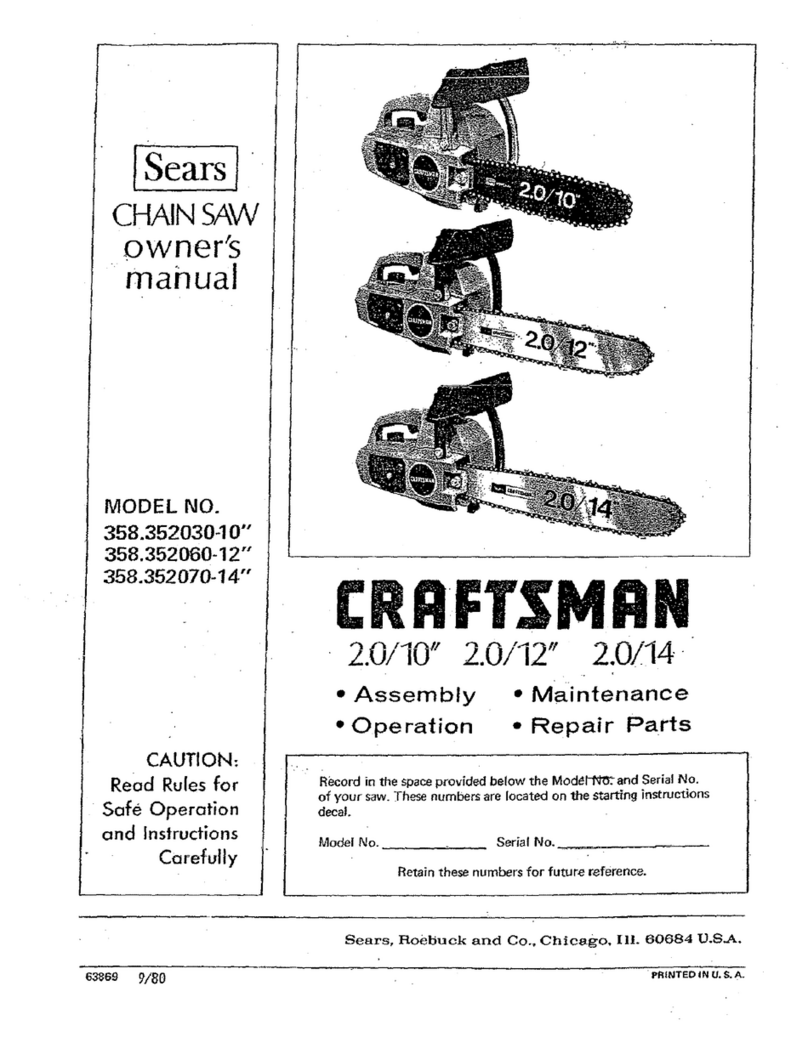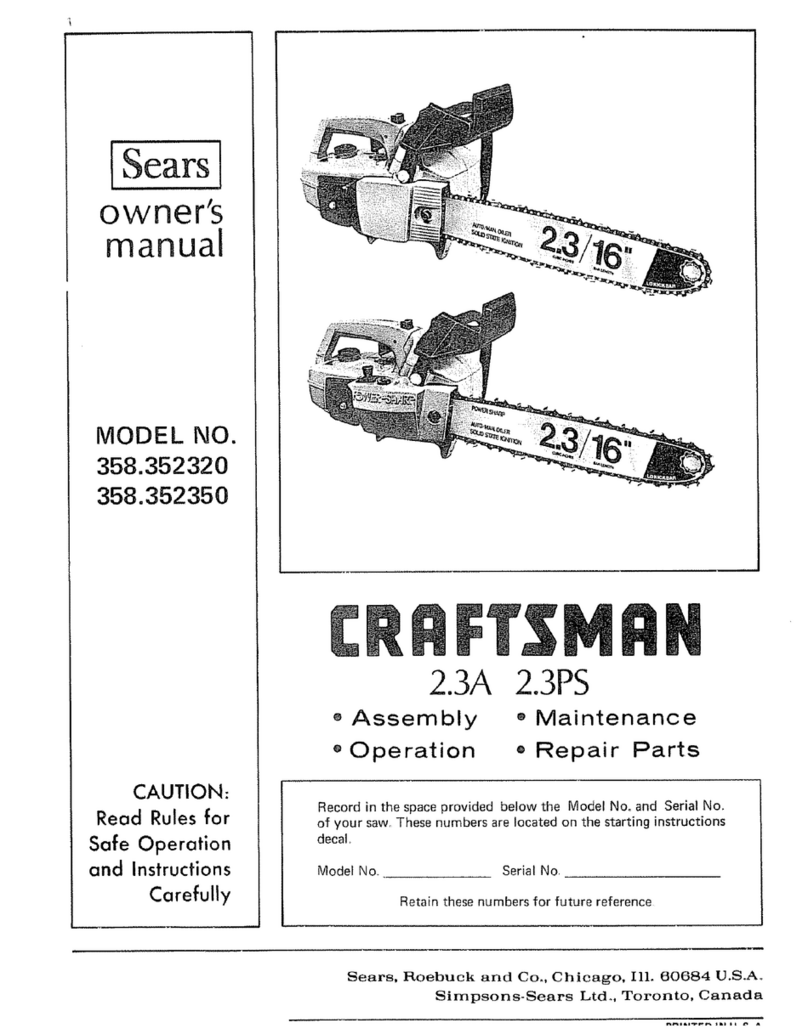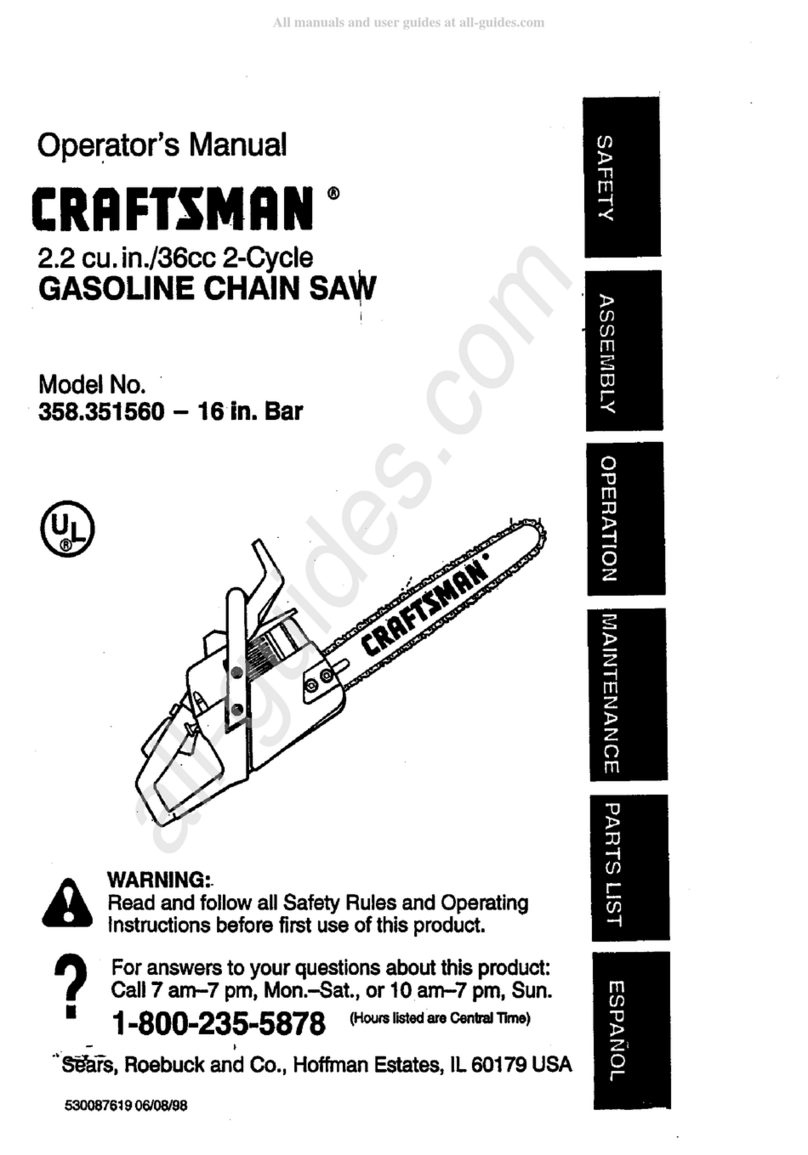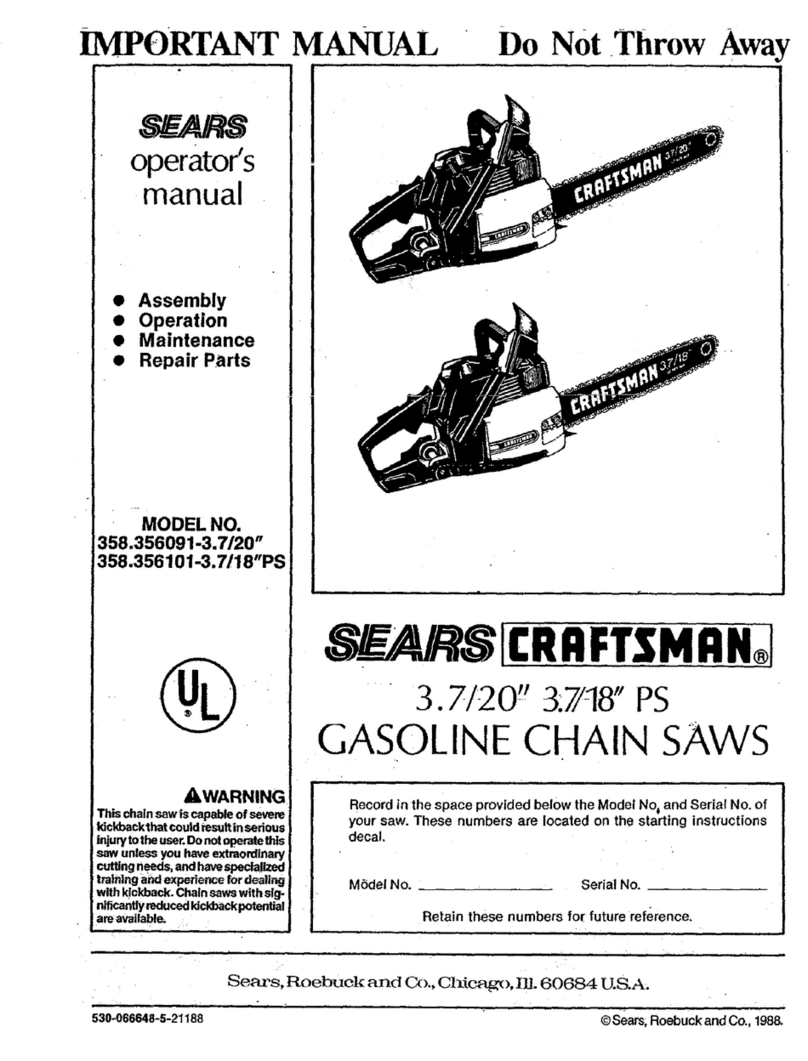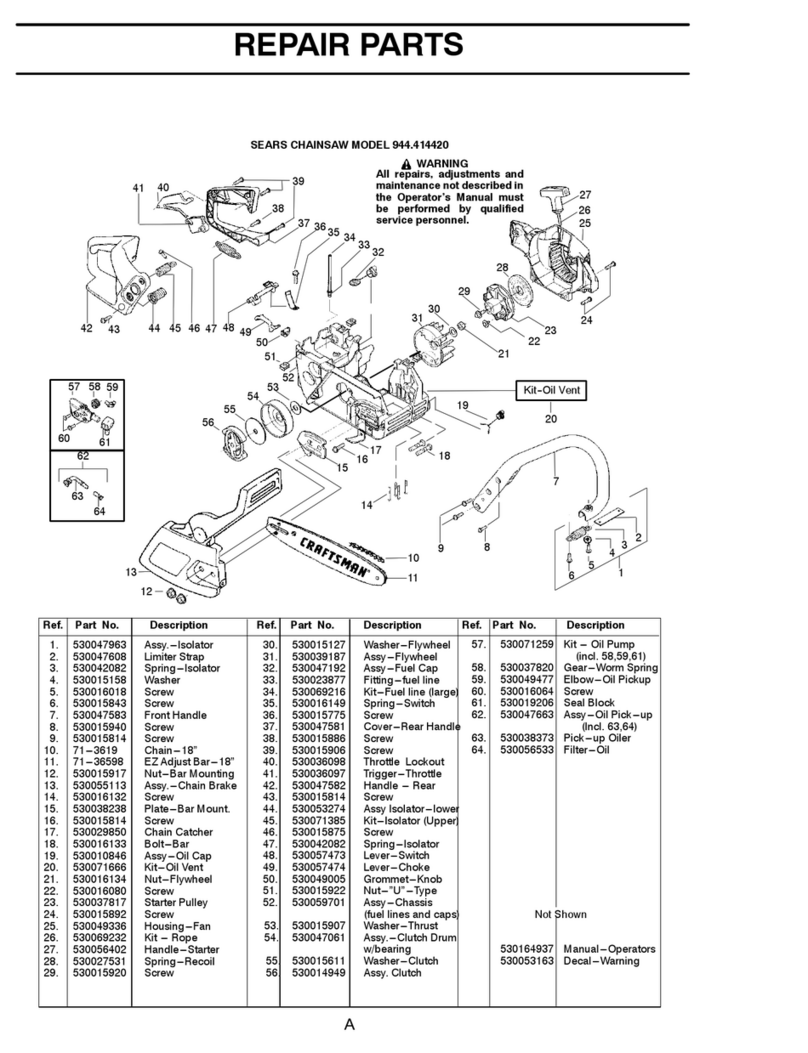t
SAFETY RULESAND PRECAUTIONS
:WARNING! :_:
Because a chain saw is a high-speed wood-cutting tool, special safety precautions
must be observed to reduce the risk of personal accidents. Careless or improper use
may cause serious injury.
A. KNOW YOUR SAW
1 Read your Owner's Manual carefully until you
completely understand and can follow all
safety rules and operating instructions before
attempting to operate the unit. :._i
:2. Restrict the use of your saw to adult users
who Understand and follow the safety rules,
....precautions, and operating instructions
B. PLAN AHEAD
Wear personal protective gear. At-
ways use steel-toed safety foot-
wear with nomsliP soles snug-
.......: fitting clothing :with reinforced
cutting resistant inserts; heavy-duty non'slip
, gloves; appropriate eye protection such as non-
fogging; vented goggles or face screen; an ap-
: ::proved safety hardhat, and sound barriers I ear
- =.plugs or mufflers to protect your: hearing. Regular
users should have hearing _hecked regularly, as
:"chain saw noisemay damage hearing. '"
' 2. Keepchildren, bystanders, and pets out of the
....work area.:Do not allow other people tobe near
::'the chain saw when starting or operating'the chain
saw_:
3. Do not handle or operate achain saw when you
are fatigued, ill, or upset; or if you havetaken
.i :alcohol, drugs or medication. You must be in
good physical conditionand mentally aiert. Chain
saw work is strenuous. If you have any condition
that might be aggravated by strenuous work,
check with your doctor before operating achain
saw.
4. Do not attempt to use your saw during bad
weather conditions such as strong wind, rain,
snow, etc., or during darkness.
5. Plan your sawing operations carefully in ad-
vance. DO not start cutting until you have a ctear
' iw0rkarea, secure footing, and if you are felling
• trees, a planned retreat path. :
GUARD AGAINST KICKBACK ..... ,
Cw
To reduce the hazard of kickback:
1. Hold the saw firmly with both hands. Left hand
on front handle barl right hand on rear handle
whether you are right-handed or left-handed.
Never use the saw with one hand .......
2. Do not overreach.
3. Do not let the tip of theguide bat contact the
ground, another log, branch, Or any other
obstruction.
5. Cut one log atatime.
6. Use extreme caution when. re-entering a pre-
vious cut.
.7. Donot attempt plunge cuts .....
8. Watch for shifting logs' or other forces that
could close a cut and pinch the chain.
9. DOnot cut above shoulder height.
10. Follow manufacturer's chain sharpening
and maintenance instructions. Keep the
chain properly tensioned. Check tension at reg-
ular intervals with the engine stopped, never
,,, with the engine, running,-Make: Sure the bar
clamp nuts are secure!y:tightened after !ension-
,, .ingthe chaio.. :.,_ .
11. _Use. the Guard Link. Chain and.. Lo-Kick®
Guide Bar designed foryour saw to reduce the
hazard of kickback. .......... -
D. AVOID REACTIVE FORCES _.
Pushback and Pull-in occur when the chain is
suddenly stopped by being pinched, caught, or
by :contacting a foreign object in thewood. This
results in areversal of the chain force used to cut
wood and causes the saw tomove inthe opposite di-
•rection Of chain rotation, resulting in loss of control
and possible serious personal injury.
To avoid Pushback:
1. Be extremely aware of situations or obstruc-
tions that may cause material to pinch the top of
or otherwise stop the chain.
: 2. Do not cut morethan one log at a time.
3. Do not twist the saw as the bar iswithdrawn
_ from an under-cut when bucking.
To avoid Pull-In: •
Kickback can lead to dangerous loss of control of
the saw and possiblY cause serious personal in- 1.
jury. Kickback isthe upwardand backward motion of
the guide bar that occurswhen the movingchain con- 2.
tacts an object atthe tip oftheguide bar.
Always begin cutting with the engine at full
throttle and the spike against the wood.
Use wedges made of plastic, wood, or light
alloy (never of steel or iron) to hold the cut
open.
